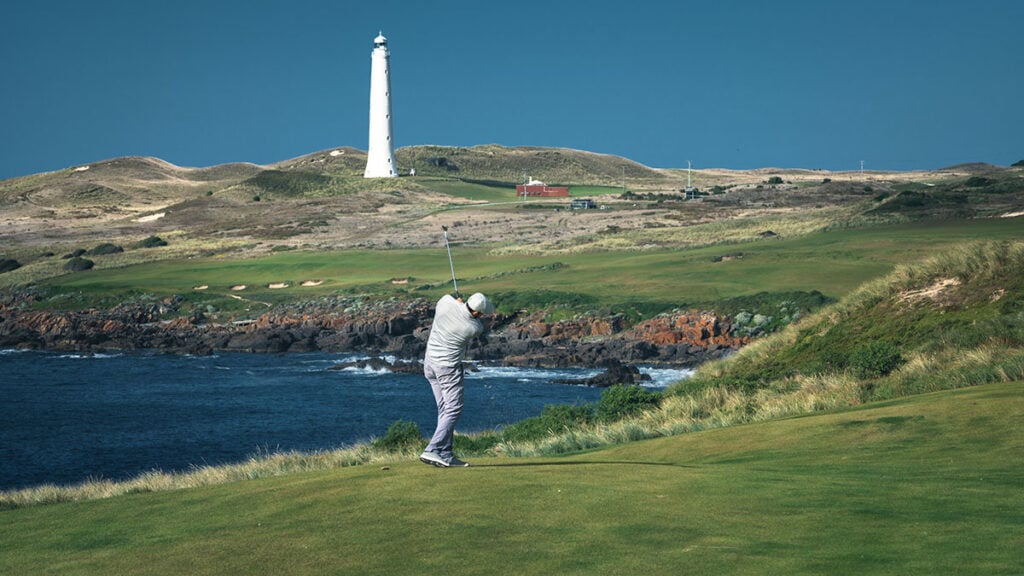Hit it 10 yards farther (driver), half a club longer (irons), three feet tighter (wedge game) and 12 inches closer (putts). That’s your winning formula
Photographs by Dom Furore
How far away are you from playing better? The answer is probably in a different form – and easier to accomplish – than you think. Instead of using superficial metrics such as the handicap figure on your scorecard, the number of lessons you take, the amount of practice you put in, or the months on the calendar, consider your improvement plan the way tour pros think about getting better. That means making the results of the shots you hit move closer to the average performance of players who are a little better than you.
What does that look like? Instead of thinking about everything you have to do to break 100, 90 or 80 – which can be daunting – split it into manageable, measurable parts. This might sound strange at first, but all you need to do is get 49 feet better across the specific categories of driving, iron play, distance wedges and putting. Do that, and you’ll improve significantly. Let me explain.
Adjustments to your driving will unlock 10 more yards off the tee, or 30 feet. Hitting your irons more solidly will give you at least half a club less into the green. Let’s call that five yards or 15 feet. Better trajectory control with your wedges will get you three feet closer to the pin. Finally, improving your speed will leave your first putts one foot closer to the hole. Add it up, and that’s 49 feet. Not so unobtainable, right? Let me help you get to that number.
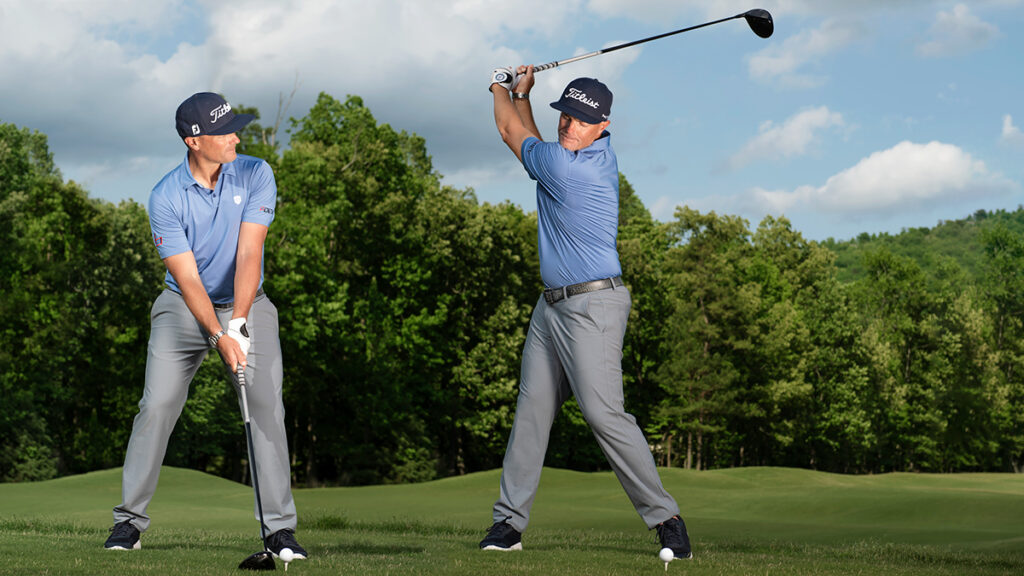
Driving: Push up for a Bigger Swing
I’m sure you’ve heard all the standard advice about hitting longer drives, like moving the ball forward in your stance and creating some upward tilt in your shoulders [above]. That’s a good starting point, but to really hit longer tee shots, think of your driver swing as two separate entities. You should have a normal, fairway-finder move- but also a specialty shot where you’re copying some of what the competitors in the World Long Drive Championships do. Their swings are typically very long, so they have more time to add speed on the downswing (you’ll need about three or four miles per hour more to pick up 10 yards).
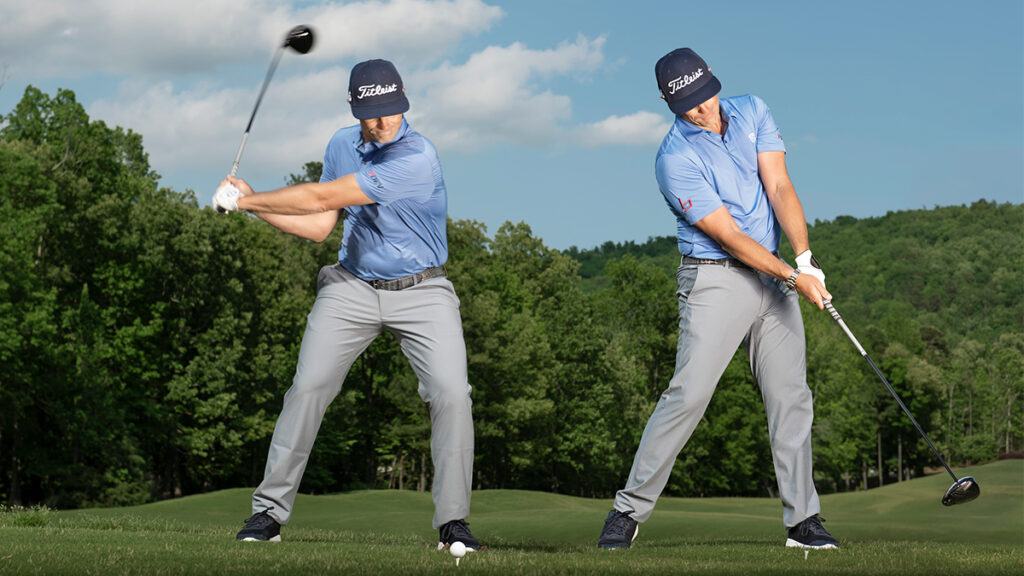
In the backswing, that means unweighting the lead foot, extending your trail leg, getting your arms up and turning your back towards the target [above]. Extend and turn as much as you can to get your mass moving upward in anticipation of what happens next. As you reach the top of the swing, push hard into the ground with your lead foot – as if you were squashing an empty golf-ball sleeve [below]. The biggest power leak most players have is initiating this push too late, when they’re down by the ball.
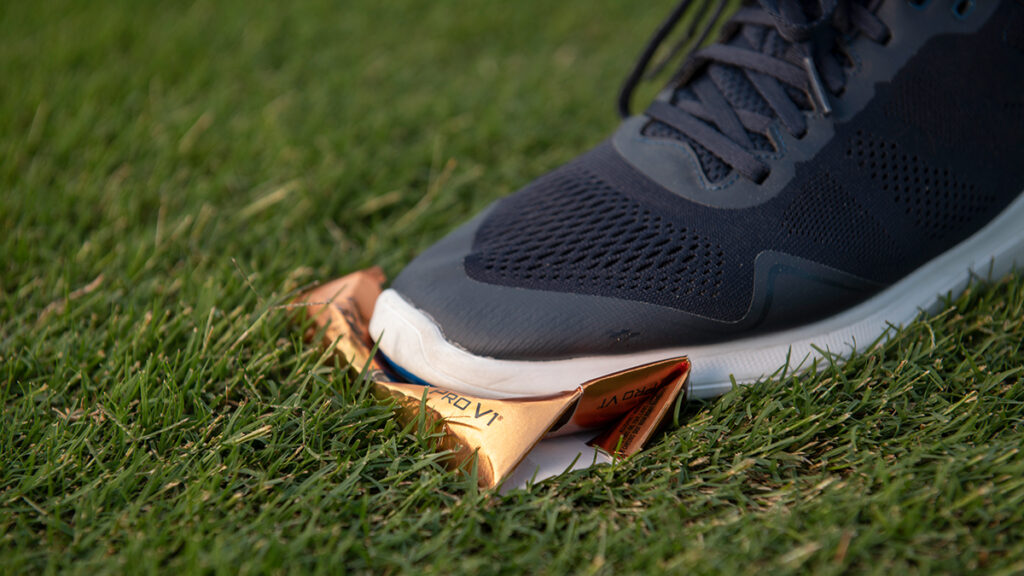
Next, as your club approaches the ball, straighten your lead leg and pull up on the handle. The more up-and-down force you generate this way – and the better you time these moves – the longer you’ll be able to hit it.
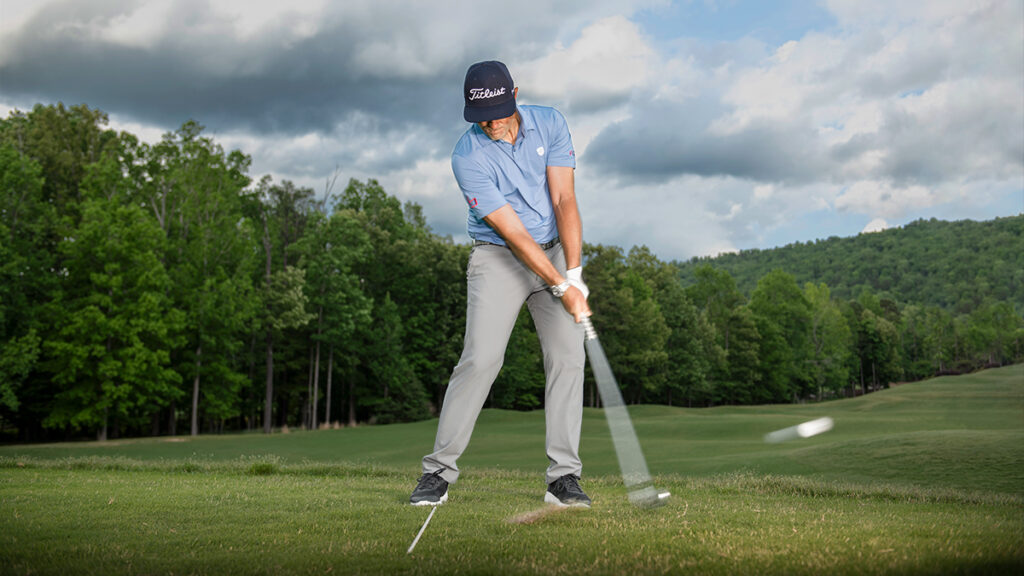
Irons: Move your Low Point forward
The urge to smash your iron shots is understandable, especially if you’ve been watching PGA Tour players hit it 150 yards with a pitching wedge. The quickest path to needing less club into the green isn’t swinging harder, it’s better contact. Many of you give away distance because you don’t have good low-point control in your iron swings. The club usually bottoms out too early, so you have to use longer, less-accurate irons from the same distances as better players.
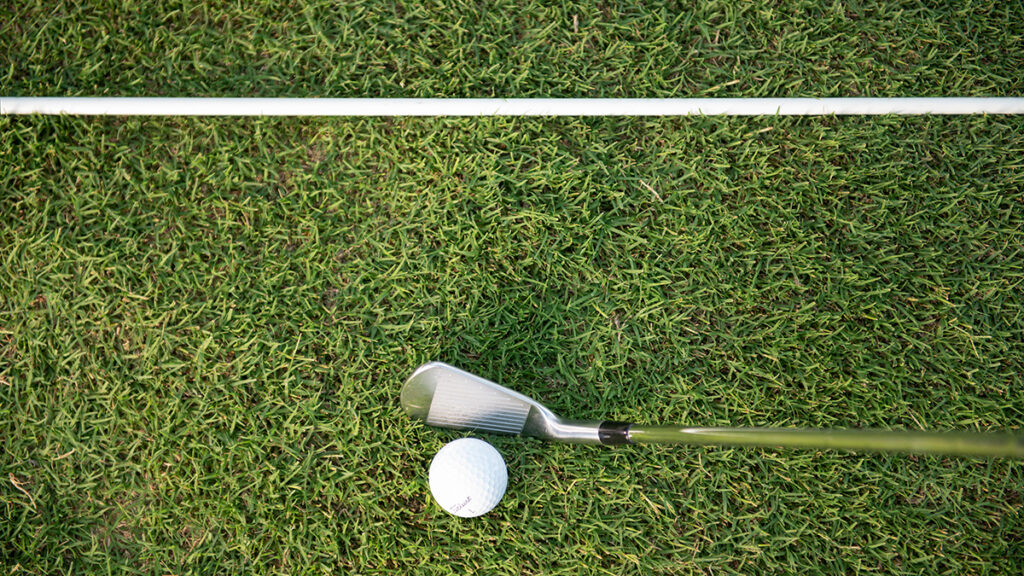
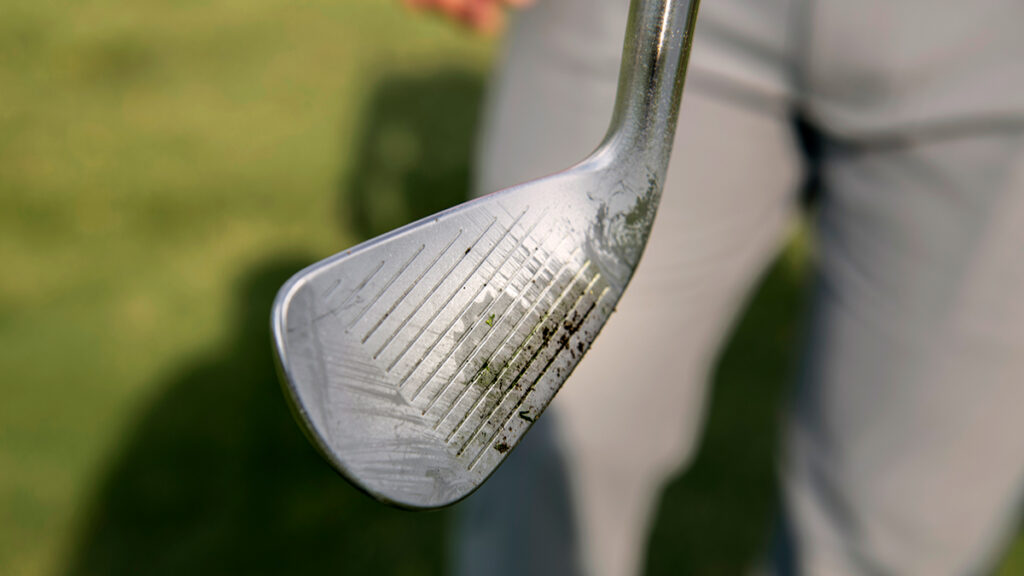
Learn to move your low point forward, ideally a few inches after the ball is struck, with this drill: set an alignment stick nine inches behind a ball [above left] and try to hit shots where you avoid the stick. Ideally, your club will strike the ball first, with less loft than it had at address, and then take a thin, banknote-size divot. After each shot, check the divot hole and where you made contact with the ball on the clubface [above right]. You want to make sure the angle of attack wasn’t too steep. That also kills distance. The divot hole should be shallow, and I like to see the ball mark on the bottom third of the clubface (dead centre) with a straight turf mark a groove or two up from the bottom.
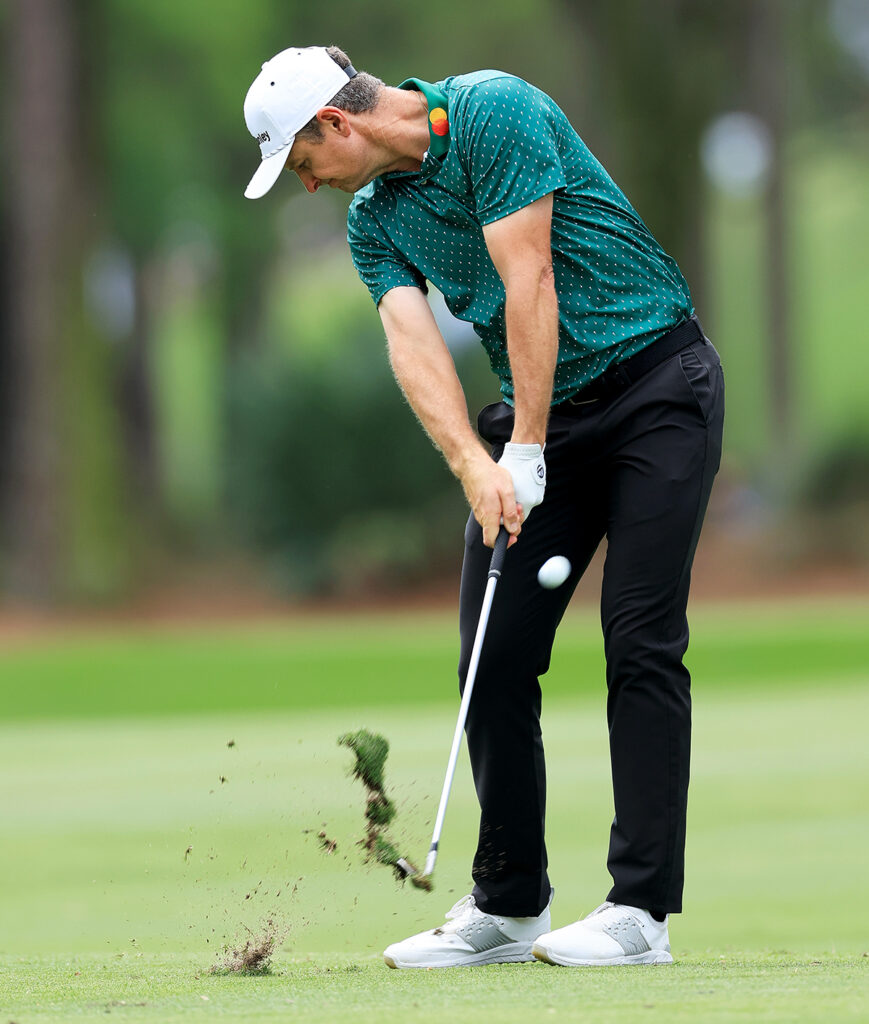
Case study: Justin Rose
If you think the pros don’t worry about making better contact, too, think again. When I first started working with 43-year-old Justin Rose, his concern wasn’t losing distance because of his age; it was an overall deterioration of his ball-striking, which put tremendous pressure on the rest of his game.
We evaluated how Justin moves and what he wanted to do with his swing, and I worked with his entire team to get a consensus on priorities. That translated into Justin shifting less off the ball and changing his arm plane to better match his natural movement pattern. The result: he’s hitting quality iron shots a lot more often. He improved more than 50 places in the strokes gained/approach stat and is in the top 30 in approach shots from 150 to 175 yards. He’ll tell you that the quality of contact really matters.
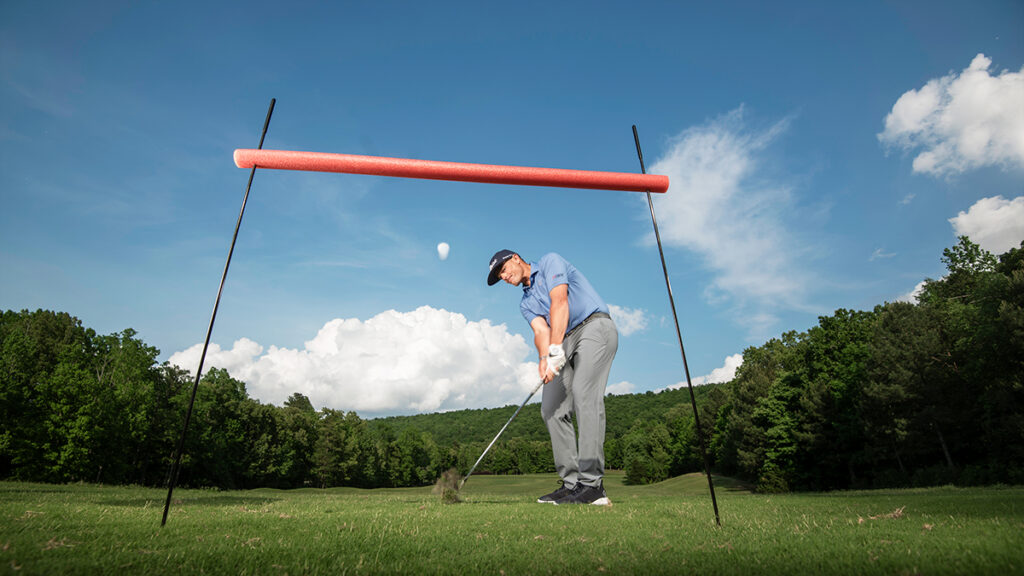
Distance wedges: Lower the bar
Poor wedge play tends to begin with a misconception-: many amateurs think they should hit high, bloopy shots into greens. Better players know to hit distance wedges and pitches much lower with more spin, which really improves accuracy. How low is their typical launch angle? If 90 degrees translates to hitting it straight up in the air, they’re hitting shots at 30 degrees or lower.
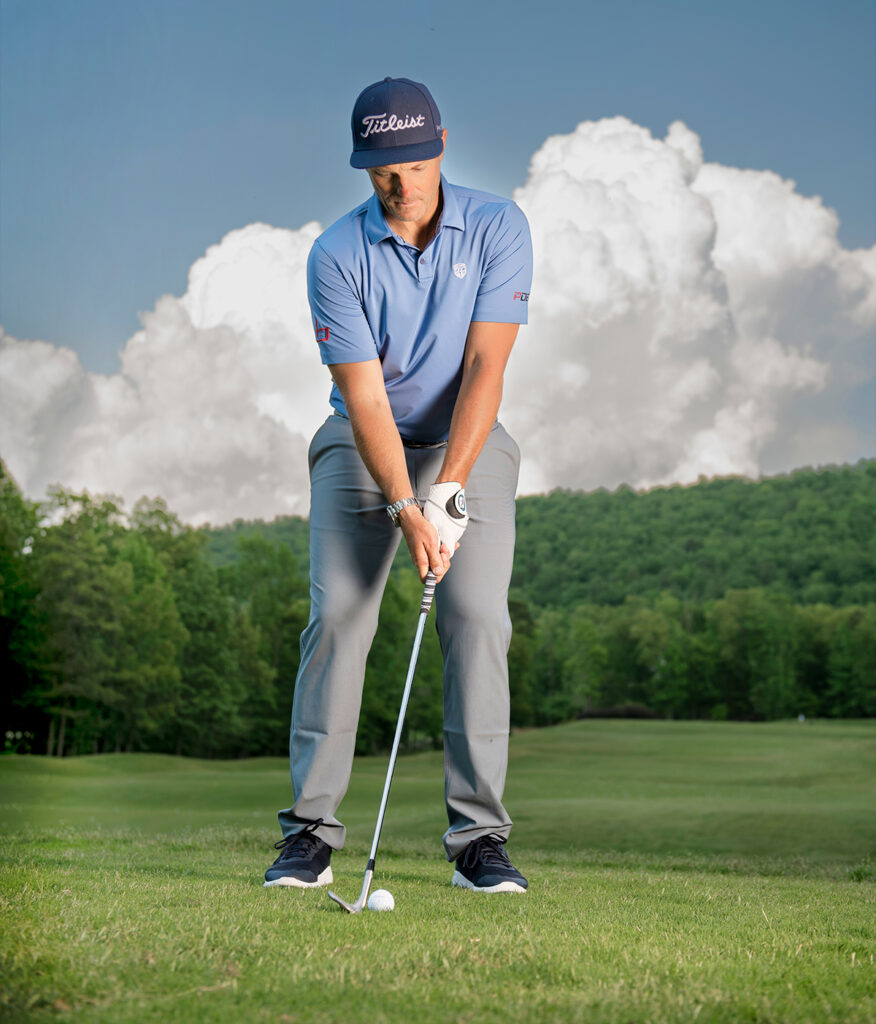
To help you bring down your trajectory, practise with this noodle gate [above heading]. Put two alignment rods in the ground and stick a pool noodle on top about four feet high and seven feet in front of you. Your goal is to hit the ball under the noodle. To do that, set up with the ball slightly back in your stance [above this paragraph], and then take the club back without a lot of wrist set. When you swing down, feel like you lead with your torso rotating towards the target while your thumbs are pointing at the ground all the way into impact. It should feel like the sweet spot of the club is trailing your body rotation and your hands. This creates the correct shallow, sweeping swing and delofts the shot. If it’s not practical to build the noodle gate, just visualise one on the range when you hit these low, piercing wedge shots.
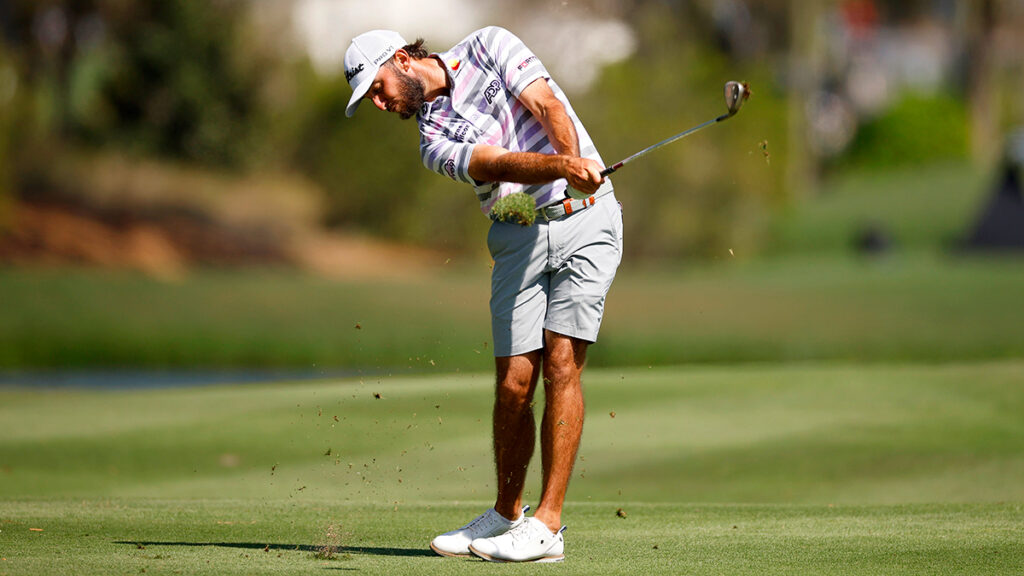
Case study: Max Homa
This pool-noodle drill is not just for high-handicappers. I used it with Max Homa, too. When he got on tour, he was statistically one of the poorer distance-wedge players out there – 161st in strokes gained on approaches from 50 yards to 125 yards. That was immediately something we set about changing. Among other stuff we did to shore things up, we used the noodle gate and a launch monitor to combine work on trajectory and distance control at the same time.
It’s no exaggeration to say Max is one of the very best off-speed iron players on tour now. He was 12th in that very same distance-wedge-approach category last year and improved his proximity by four feet. That translates into a few more birdies per tournament– – and going from an average player to one of the 10 best in the world golf ranking.
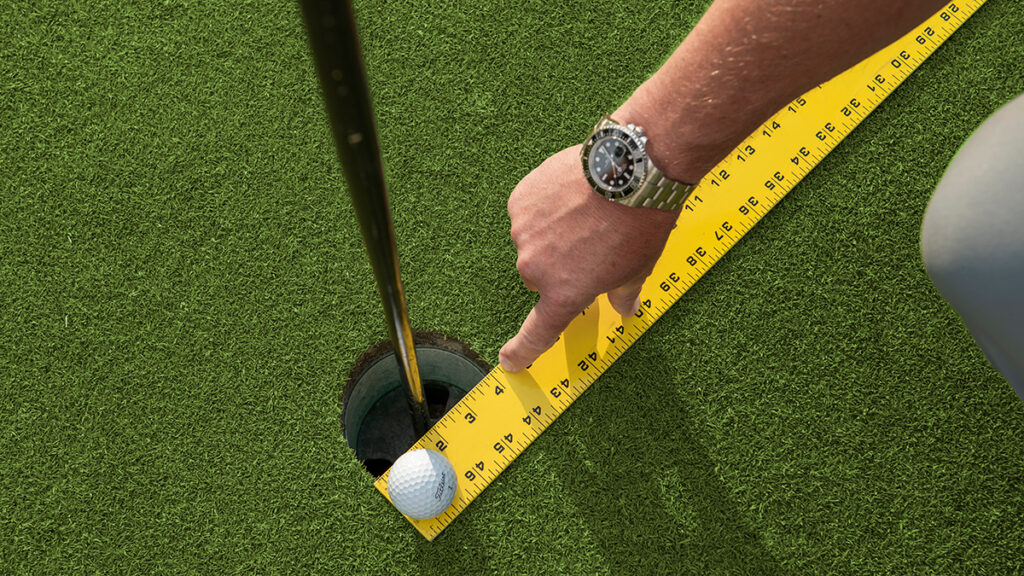
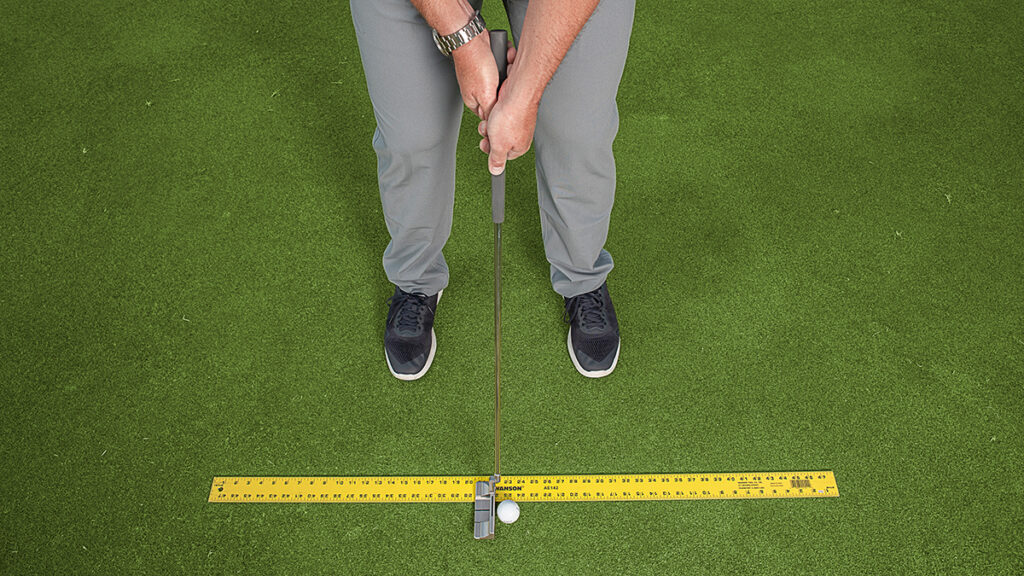
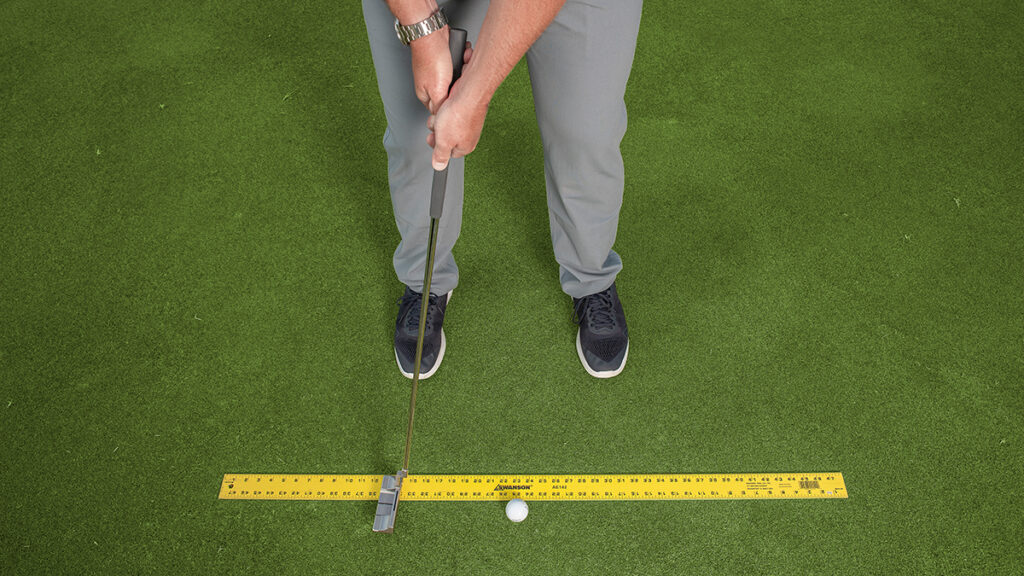
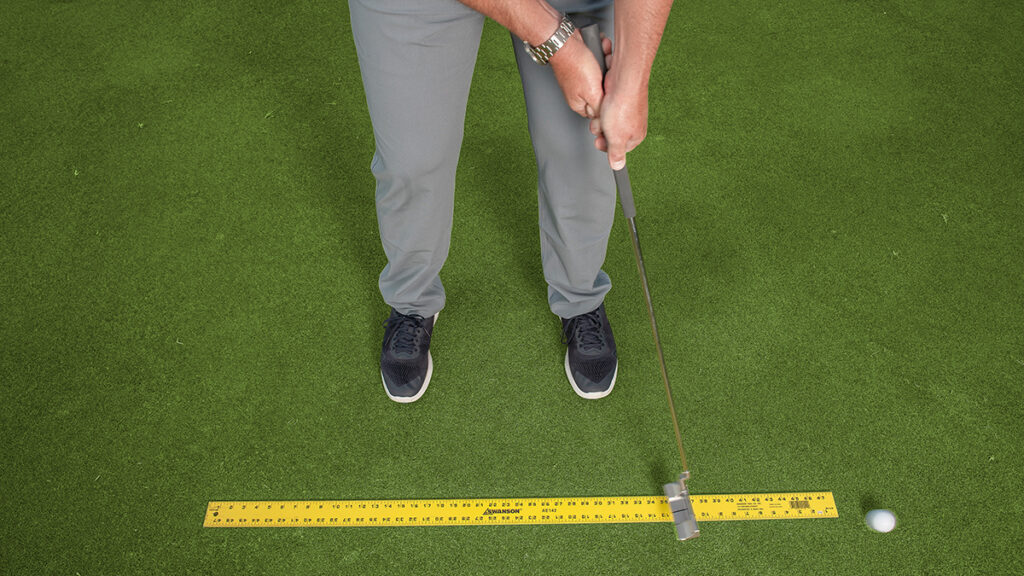
Putting: Change Speed with your Stroke Size
Even if you’re a poor green-reader and don’t do a great job of starting the ball on line, you still can really improve if your putts have good speed. Your results will never be that far from the hole – which reduces second-putt drama. PGA Tour players make 99 percent of their three-footers and 92 percent from four feet. If you reduce your leave distance by at least a foot, imagine how it could impact your scores.
The best way to improve speed is to create a repeatable framework. If you normally make the same swing size for most putts, but change how much you accelerate with your hands and wrists to adjust for distance, you’ll be a lot more consistent if you instead increase the size of your stroke as putts get longer. That way, the concept of your stroke can stay the same, and that leads to reliability.
It can help to practise with a yardstick. Make progressively bigger backswings, checking the length with the stick [above]. Then let the putter coast through the ball, using only its mass and momentum to make it roll. How far does the ball travel? Keep practising like this, and you’ll start hitting putts that finish their roll as they near the cup. What you want is to maximise the “capture speed”. Hit a putt too fast, and it might drop only if you clank it off the flagstick. Hit it at the right speed, and any portion of the four-inch-wide hole [top photo] might be able to capture the ball.
Golf Digest Teaching Professional Mark Blackburn is ranked by his peers as one the 50 Best Teachers in America


